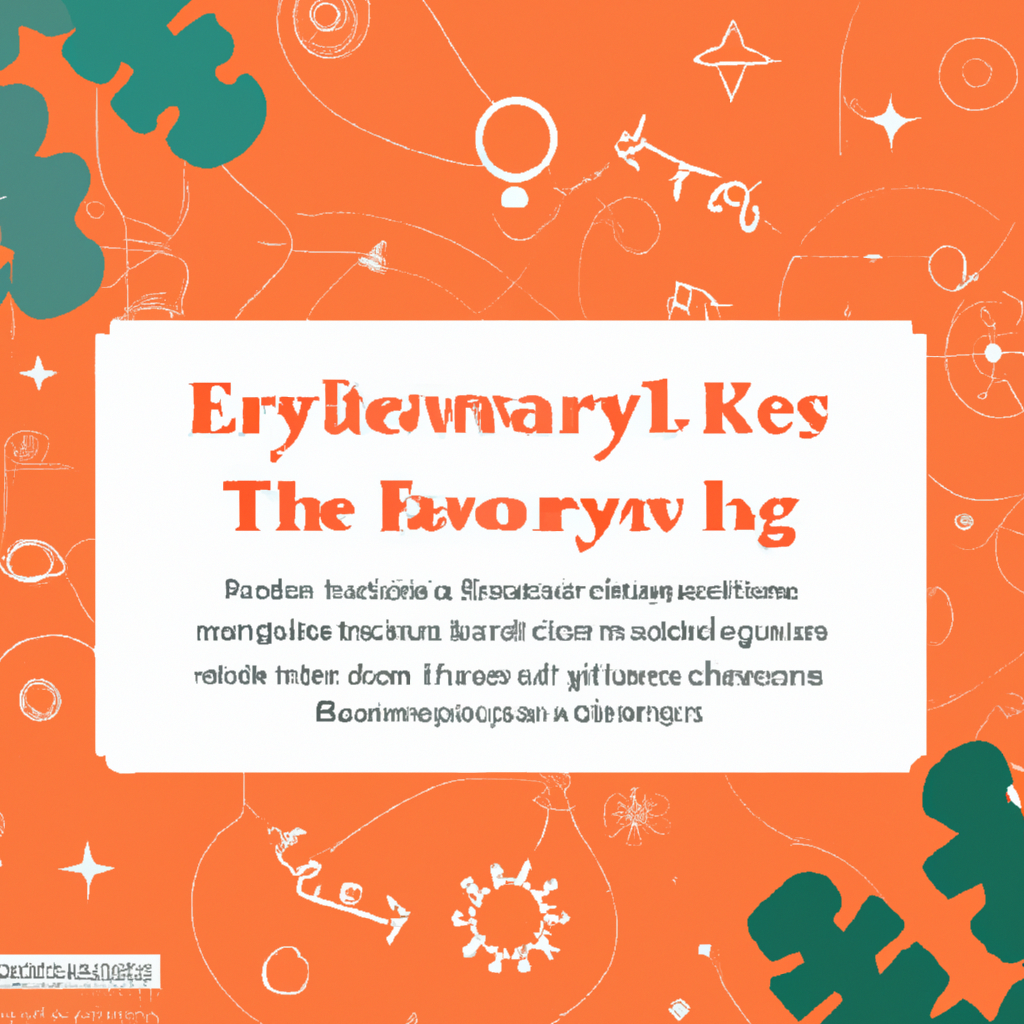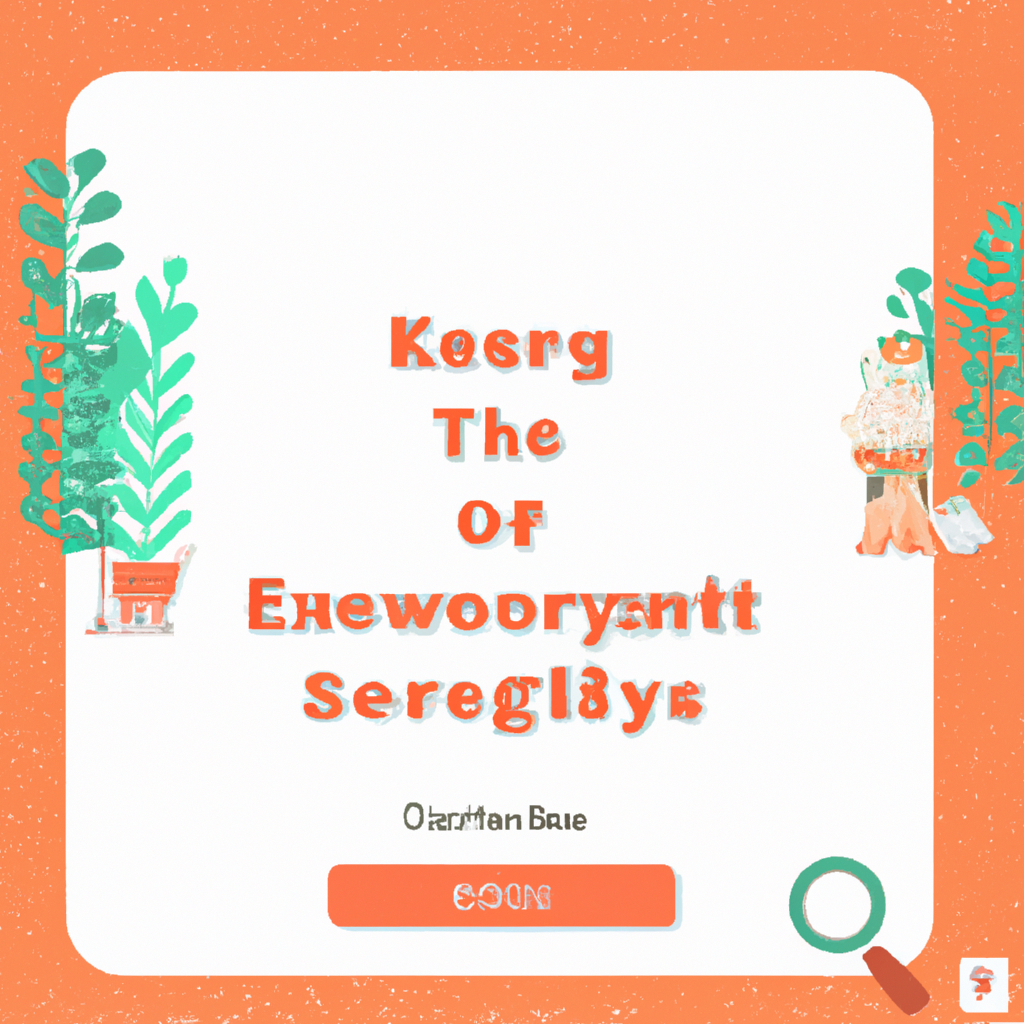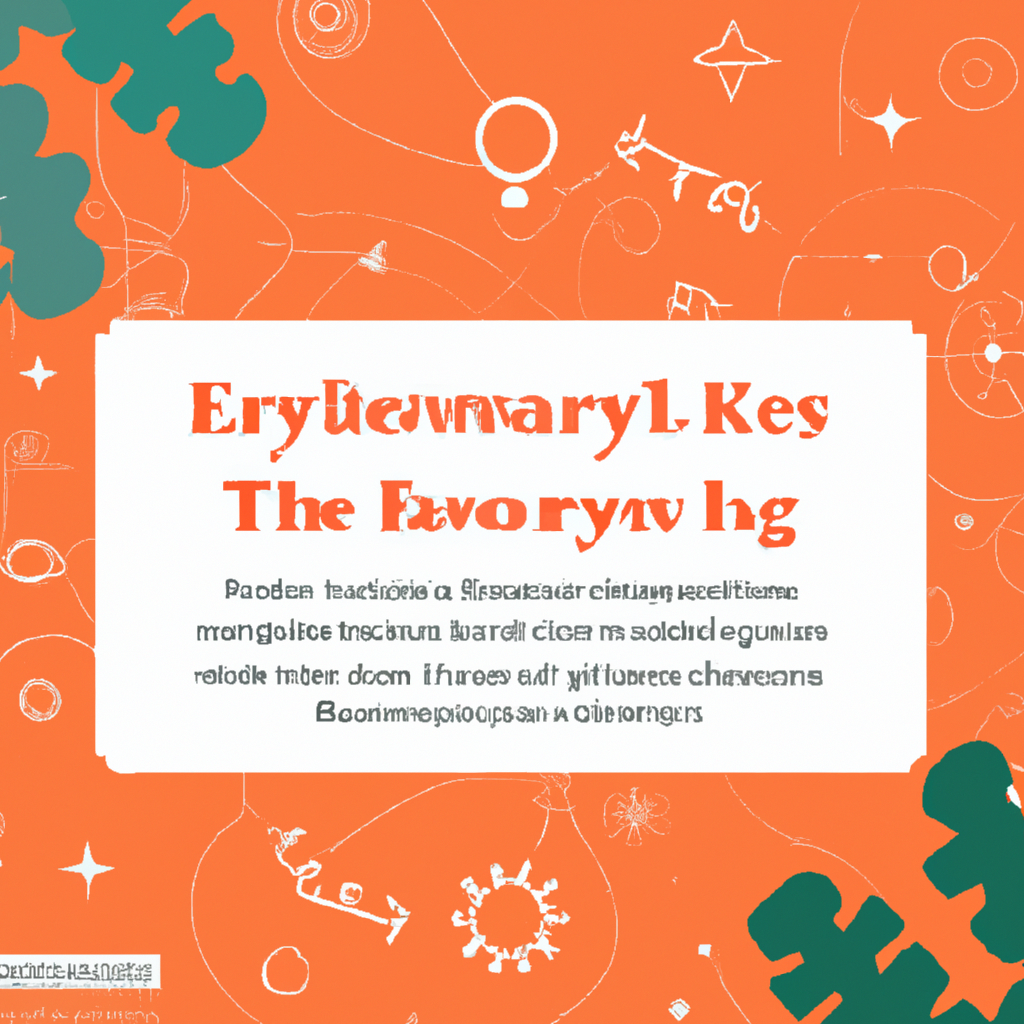Do you want to maximize the visibility of your Etsy shop? Look no further! In “The Ultimate Guide to Finding the Best Keywords on Etsy,” you will discover proven techniques for Etsy keyword research, powerful Etsy SEO strategies, and effective Etsy shop optimization. Whether you’re a seasoned seller or just starting out, this guide will equip you with the tools you need to stand out from the competition. Say goodbye to guesswork and hello to increased traffic and sales. Get ready to take your Etsy shop to new heights with the best keywords in town!
Understanding Etsy Keyword Research
Keywords play a crucial role in the success of your Etsy shop. They are the words or phrases that shoppers use to find products they are interested in. By understanding and implementing effective keyword research strategies, you can increase your visibility on Etsy and attract more potential customers to your shop.
Importance of Keyword Research
Keyword research is essential for Etsy sellers because it helps you understand the language your customers are using to search for products. By identifying the keywords that are highly relevant to your products, you can optimize your shop to appear in search results and increase your chances of making sales.
How Etsy’s Search Algorithm Works
Etsy uses a complex search algorithm to determine the order in which listings appear in search results. The algorithm takes into account various factors, including relevancy, listing quality, customer satisfaction, and other performance metrics. By understanding how this algorithm works, you can optimize your shop to improve your rankings and visibility on Etsy.
Types of Keywords on Etsy
There are two main types of keywords on Etsy: broad keywords and long-tail keywords. Broad keywords are general terms that describe a broad category of products, such as “handmade jewelry.” Long-tail keywords, on the other hand, are more specific phrases that are highly targeted and usually have lower search volume, such as “dainty gold necklace with pearl pendant.” Both types of keywords are important for Etsy sellers, and it’s crucial to strike a balance between using popular broad keywords and highly specific long-tail keywords.
Tools for Etsy Keyword Research
To conduct effective keyword research on Etsy, there are several tools you can use to gather valuable insights and data.
Etsy’s Own Search Analytics
Etsy provides its sellers with a search analytics tool that helps them understand how shoppers are finding their listings. This tool allows you to see the search terms people used to find your listings, the click-through rates, and other valuable data that can inform your keyword research strategy.
Google Keyword Planner
Google Keyword Planner is a free tool provided by Google that enables you to discover keywords and see their search volume. While it is not specific to Etsy, it can still provide valuable insights into popular keywords related to your products.
SEMRush
SEMRush is a comprehensive SEO tool that offers keyword research capabilities. It allows you to search for keywords, analyze their search volume and competition level, and gather insights into your competitors’ keyword strategies. While SEMRush is a paid tool, it offers in-depth analytics that can help you make more informed keyword decisions.

Brainstorming and Collecting Keywords
To start your keyword research, it’s important to brainstorm and collect a wide range of relevant keywords for your Etsy shop. This will provide you with a foundation to build upon and help you identify potential niches and opportunities.
Starting with Broad Keywords
Begin by identifying broad keywords that are related to your products. These words should describe the general category or theme of your offerings. For example, if you sell handmade candles, your broad keywords might include “candles,” “handmade candles,” and “soy candles.”
Using Etsy’s Search Bar and Auto-Suggestions
Etsy’s search bar is a powerful tool for keyword research. Start typing a broad keyword related to your products, and Etsy will auto-suggest popular search terms that shoppers have used. These auto-suggestions can give you valuable insights into the keywords that are in high demand on Etsy.
Analyzing Competitor Keywords
Another effective strategy is to analyze the keywords that your competitors are using. Take a look at their product titles, tags, and descriptions to identify the keywords they are targeting. This can help you identify gaps in the market and discover new keyword opportunities.
Analyzing Keyword Competition and Search Volume
Once you have collected a list of potential keywords, it’s important to analyze their competition level and search volume. This will help you determine which keywords are worth targeting and which ones may be too competitive or have low search volume.
Assessing Keyword Competitiveness
Keyword competitiveness refers to the level of competition for a specific keyword. It’s important to strike a balance between targeting highly competitive keywords that have a large search volume and targeting less competitive keywords that may have a smaller search volume but will be easier to rank for. Consider using SEO tools like SEMRush to analyze the competition level of your keywords and make informed decisions.
Using SEO Tools for Search Volume Analysis
Search volume analysis allows you to understand how many people are searching for a particular keyword. While broad keywords may have high search volume, they are also highly competitive. Long-tail keywords, on the other hand, often have lower search volume but are more targeted and may have less competition. SEO tools like SEMRush can provide valuable insights into keyword search volume and help you identify the best keywords to target.
Evaluating Long-Tail Keywords
Long-tail keywords can be highly effective in attracting targeted traffic to your Etsy shop. While they may have lower search volume, they often have higher conversion rates because they are more specific. Evaluate the potential of long-tail keywords by considering their relevancy to your products and the competition level. Targeting a combination of broad and long-tail keywords can help you reach a wider audience while also attracting highly motivated shoppers.

Refining and Targeting Your Keyword List
Once you have analyzed the competition and search volume of your keywords, it’s time to refine and target your keyword list to optimize your Etsy shop.
Narrowing Down to Specific Niches
Refine your keyword list by narrowing down to specific niches within your broader category. This will help you target a more specific audience and differentiate your products from competitors. For example, if you sell handmade jewelry, you can target niches like “boho jewelry,” “minimalist jewelry,” or “gemstone jewelry.”
Optimizing for Product Descriptions
Ensure that your chosen keywords are incorporated naturally into your product descriptions. Write descriptive and compelling product descriptions that not only include relevant keywords but also highlight the unique features, benefits, and craftsmanship of your products. Avoid keyword stuffing, as it can negatively impact your shop’s visibility and customer experience.
Utilizing Tags and Attributes
Utilize Etsy’s tags and attributes to further optimize your listings for keywords. Choose tags that are highly relevant to your products and mirror the language that shoppers would use when searching for items like yours. Utilizing attributes such as color, size, and material can also help your listings appear in relevant search filters and improve your visibility.
Monitoring and Adjusting Keyword Performance
Keyword research is an ongoing process, and it’s important to monitor and adjust the performance of your keywords to stay ahead of the competition and adapt to changing search trends.
Tracking Keyword Rank and Performance
Regularly monitor the ranking and performance of your chosen keywords. Use Etsy’s search analytics tool to track the impressions, clicks, and conversions of your listings. This data will help you identify which keywords are driving the most traffic and sales, allowing you to optimize your shop accordingly.
A/B Testing Different Keywords
Experiment with different keywords to see which ones perform the best for your shop. Conduct A/B tests by using different keywords in your product titles, descriptions, and tags, and monitor their impact on your search rankings and sales. Adjust your keyword strategy based on the results of these tests.
Adapting to Changes in Search Trends
Stay updated with the latest trends in your industry and adapt your keyword strategy accordingly. Keep an eye on popular search terms and new emerging keywords that may be relevant to your products. By staying ahead of trends, you can optimize your shop to capitalize on new opportunities and attract more customers.
Optimizing Your Etsy Shop for Keywords
In addition to optimizing individual listings, it’s important to optimize your entire Etsy shop to improve its visibility and rankings in search results.
Optimizing Shop Title and About Section
Your shop title and about section are important areas to incorporate your targeted keywords. Craft a concise and descriptive shop title that includes relevant keywords to give potential customers an immediate idea of what your shop offers. Similarly, use keywords in your shop’s about section to provide more context and improve your visibility in search results.
Creating Relevant and Descriptive Product Titles
Ensure that your product titles are concise, descriptive, and optimized for keywords. Include relevant details such as the product type, color, size, and any unique features. Incorporate your targeted keywords naturally to improve your listings’ chances of appearing in relevant search results.
Writing Compelling Product Descriptions
Write compelling product descriptions that not only provide important details but also inspire customers to make a purchase. Incorporate relevant keywords naturally within the descriptions to improve your shop’s visibility in search results. Focus on highlighting the benefits, unique features, and quality of your products to attract potential customers.
Optimizing Images and Tags for Keywords
Optimizing your product images and tags is another important aspect of Etsy SEO. By strategically incorporating keywords, you can enhance your shop’s visibility and attract more potential customers.
Using Targeted Keywords in Image Filenames
When saving your product images, use descriptive filenames that include relevant keywords. This can help search engines understand the content of the images and improve your shop’s visibility in image search results.
Writing Alt Text with Keywords
Alt text is a descriptive text that is displayed when an image cannot be loaded. Write alt text that includes relevant keywords to further optimize your product images. This can help improve your shop’s visibility in image search results and attract potential customers.
Utilizing Relevant Tags and Categories
Choose tags and categories that are highly relevant to your products and include targeted keywords. Utilize Etsy’s built-in taxonomies to categorize your listings accurately and improve your visibility in relevant search filters. This can help potential customers discover your products more easily.
Building External Backlinks and Social Signals
In addition to optimizing your Etsy shop, building external backlinks and social signals can further boost your shop’s visibility and improve its search rankings.
Importance of External Links on Etsy SEO
External backlinks from reputable websites can signal to search engines that your shop is authoritative and trustworthy. Consider reaching out to relevant bloggers, influencers, and websites in your niche to establish partnerships and secure backlinks. These backlinks can improve your shop’s search rankings and bring targeted traffic to your listings.
Utilizing Social Media and Blogs
Utilize social media platforms and blogs to promote your Etsy shop and products. Create engaging and shareable content that incorporates targeted keywords and encourages social sharing. This can help attract more potential customers and generate external backlinks and social signals that positively impact your shop’s search rankings.
Partnering with Influencers for Promotion
Collaborating with influencers in your niche can help expose your shop to a larger audience and generate valuable backlinks and social signals. Reach out to influencers who align with your brand and offer them free samples or exclusive discounts in exchange for featuring your products on their blogs or social media channels. This can provide a significant boost to your shop’s visibility and help you reach new customers.
Etsy SEO Best Practices and Trends
To stay ahead in the competitive Etsy marketplace, it’s important to stay updated with the latest best practices and emerging SEO trends.
Staying Up-to-Date with Etsy’s Algorithm Changes
Etsy frequently updates its search algorithm to improve the shopping experience for its users. Stay informed about these updates by following Etsy’s official announcements and seller forums. By staying up-to-date, you can adapt your keyword strategy and optimize your shop accordingly.
Implementing SEO Factors for Better Ranking
In addition to keyword optimization, there are other SEO factors that can impact your shop’s ranking. Focus on improving factors such as listing quality, customer satisfaction, product reviews, and shipping times to improve your shop’s overall performance and visibility on Etsy.
Experimenting with Emerging SEO Techniques
Keep an eye on emerging SEO techniques that can give you a competitive edge. Stay informed about the latest SEO trends, such as voice search optimization, mobile optimization, and video marketing. Experiment with these techniques and assess their impact on your shop’s visibility and sales.
In conclusion, understanding Etsy keyword research is crucial for the success of your shop. By utilizing the right tools, brainstorming relevant keywords, analyzing competition and search volume, refining your keyword list, monitoring performance, and optimizing your entire shop for keywords, you can improve your visibility in search results and attract more potential customers. Remember to stay updated with Etsy’s algorithm changes, implement SEO best practices, and experiment with emerging SEO techniques to stay ahead in the ever-evolving world of Etsy SEO.



